Syn.: Arabidium alpinum (L.) Fourr., Arabis crispata Willd.
Family: Brassicaceae Burnett
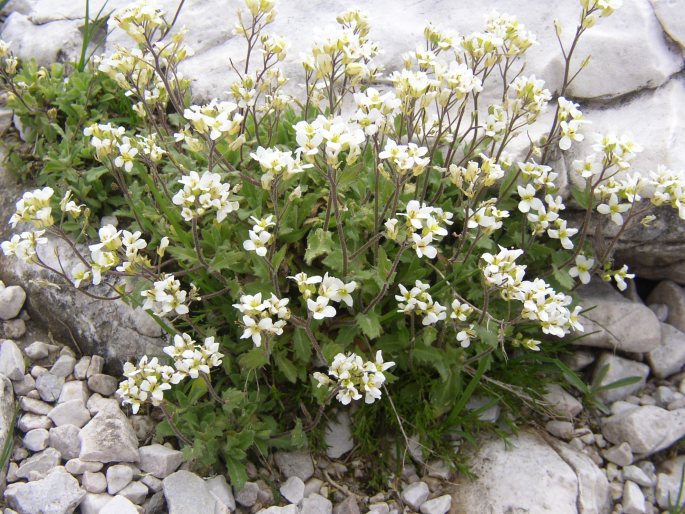
Distribution: Arctic regions of Europe and northeastern part of North America, Greenland, Iceland, western Siberia, and probably also the Russian Far East, mountains of Ethiopia and Kenya. In southern areas of Europe occurs only in the mountains – the Alps, Massif Central, Pyrenees, Apennines, Dinarides, Carpathians, Sudetes Mts.
Ecology: It grows in tundra or on montane rocks and gravels, on limestone, up to 3200 m asl. It blooms from June to August.
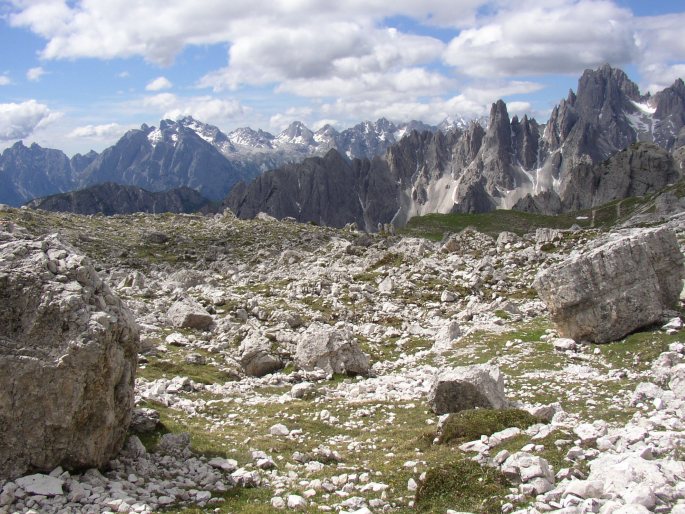
Decription: Perennial herb, (5–)10–40 cm tall, decumbent to erect, branched below, with vegetative rosettes and unbranched flowering stems. Basal leaves attenuate-petiolate, oblong or obovate, dentate, cauline leaves ovate to lanceolate. Flowers in a raceme, tetramerous, sepals 3–5 mm long, petals 6–10 mm long, white. The fruit is a siliqua, 20–40 mm long.
Use: The Alpine Rockcress is grown in gardens as a decorative plant, mainly in rock gardens, but the most widely cultivated is the Garden Rockcress (Arabis caucasica), closely related species.
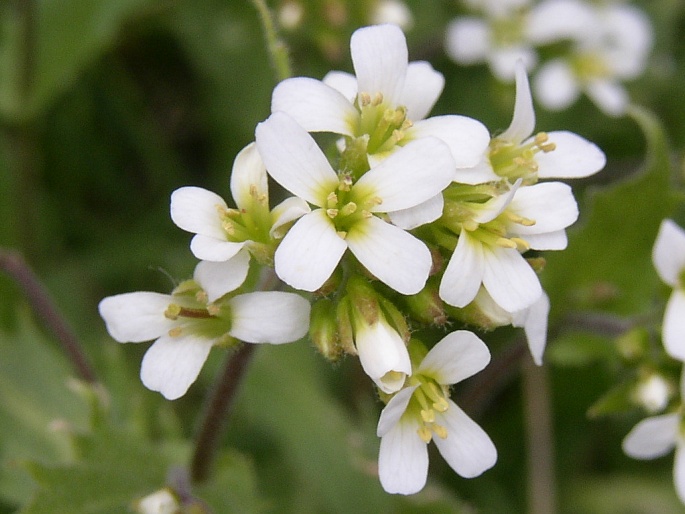
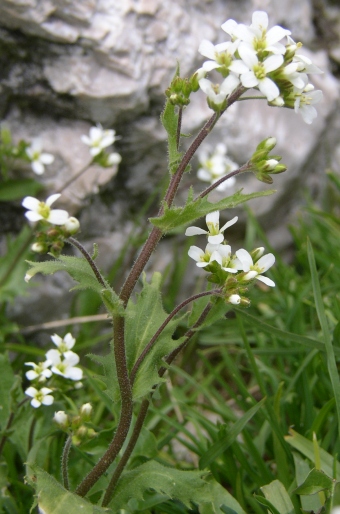
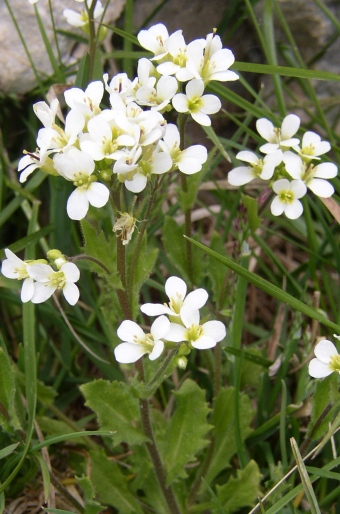
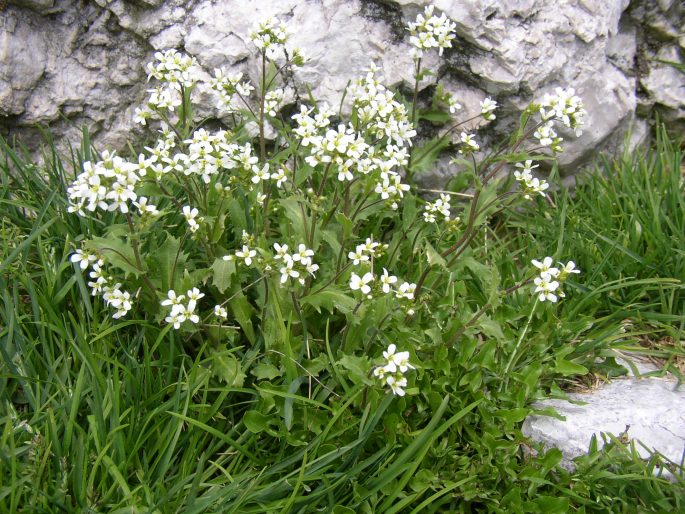
These images were taken in Italy, the Dolomites, Tre Cime (June 18, 2005).


